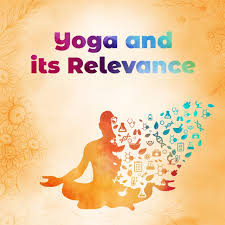
Introduction

In today’s fast-paced world, stress and anxiety have become common companions. More than ever, people are searching for ways to find balance, peace, and better health. Enter yoga—a practice that has been around for thousands of years and continues to grow in popularity. Whether you’re a beginner or an experienced practitioner, yoga offers a wealth of benefits for both the mind and body. In this blog, we’ll explore the transformative power of yoga and how you can incorporate it into your daily routine.
The Benefits of Yoga
- Physical Health: Yoga is a full-body workout that improves flexibility, strength, and balance. Poses like the downward dog, warrior, and tree pose stretch and tone muscles, enhancing physical fitness. Regular practice can also help alleviate chronic pain, improve posture, and boost cardiovascular health.
- Mental Clarity: One of the most profound benefits of yoga is its ability to calm the mind. Through deep breathing and meditation, yoga helps reduce stress, anxiety, and depression. It encourages mindfulness, allowing you to live in the present moment and find clarity in your thoughts.
- Emotional Well-being: Yoga promotes emotional balance by teaching you how to manage your emotions. As you practice, you learn to control your breath, which in turn helps regulate your emotions. This leads to greater self-awareness and emotional resilience.
- Spiritual Growth: Yoga is more than just physical exercise; it’s a spiritual journey. The practice encourages self-reflection, helping you connect with your inner self and the world around you. This connection fosters a sense of purpose and inner peace.
How to Start a Yoga Practice

- Choose a Style: There are many different styles of yoga, each with its unique focus. Hatha yoga is great for beginners, as it focuses on basic postures and breathing techniques. Vinyasa yoga is more dynamic, with a flow of movements that are synchronized with the breath. If you’re looking for a more intense workout, try Ashtanga or Bikram yoga.
- Find a Class or Online Tutorial: If you’re new to yoga, consider taking a class at a local studio. This will give you the guidance and support you need to learn the basics. If you prefer practicing at home, there are countless online tutorials and apps that cater to all levels of experience.
- Set a Schedule: Consistency is key when it comes to yoga. Set aside time each day, even if it’s just 10-15 minutes, to practice. Morning is a great time to do yoga, as it helps set a positive tone for the day.
- Listen to Your Body: Yoga is about listening to your body and moving at your own pace. Don’t push yourself too hard, especially if you’re just starting out. Over time, you’ll naturally build strength and flexibility.
Advanced Tips for Deepening Your Practice

- Incorporate Meditation: Meditation is a powerful tool that can deepen your yoga practice. Start with just a few minutes of seated meditation, focusing on your breath. Gradually increase the time as you become more comfortable.
- Explore Pranayama: Pranayama, or breath control, is an integral part of yoga. Different techniques, like alternate nostril breathing or Kapalabhati, can help energize your body and calm your mind.
- Join a Yoga Community: Being part of a yoga community can be incredibly rewarding. Whether it’s online or in person, connecting with others who share your passion can inspire you to stay committed to your practice.
Conclusion

Yoga is a journey that offers endless benefits for your mind, body, and soul. Whether you’re seeking physical fitness, mental clarity, or spiritual growth, yoga can help you achieve your goals. Start small, stay consistent, and watch as yoga transforms your life in ways you never imagined.
Call to Action
Ready to start your yoga journey? Join our free online yoga challenge and discover the power of yoga for yourself. Whether you’re a beginner or a seasoned yogi, our community is here to support you every step of the way. Sign up today and take the first step toward a healthier, happier you!
SEO Tips to Drive Traffic:
- Keyword Optimization: Use tools like Google Keyword Planner to identify popular search terms related to yoga. Incorporate these keywords naturally throughout your blog.
- Meta Description: Write a compelling meta description for your blog post, around 150-160 characters, that includes your primary keyword and a call to action.
- Internal and External Links: Link to other relevant posts on your blog and credible external sources. This can help improve your blog’s SEO and provide readers with more value.
- Social Media Sharing: Share your blog post on social media platforms like Instagram, Facebook, and Twitter. Use relevant hashtags and engage with your audience to increase visibility.
- Guest Posting: Reach out to other wellness or fitness blogs and offer to write a guest post that links back to your blog. This can help drive traffic and improve your blog’s search engine ranking.
No responses yet